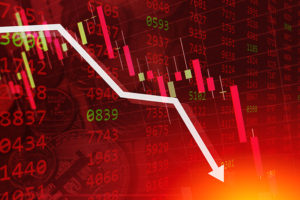Bitcoin halving tonight, a celebration of the most effective ecosystem
Bitcoin halving is a phenomenon that takes place approximately every four years and is of great importance to the entire community cryptocurrency. Its influence is felt both in the technical aspects of the Bitcoin network and in the financial markets. In this article, we will look at what exactly a halving is, why it is important and what we can expect from the next one, which will take place on Saturday, April 20, 2024 at night.
What is Bitcoin halving?
Halving is the process of reducing the rewards for mining new blocks Bitcoin by half. When Satoshi Nakamoto, the mysterious creator of Bitcoin, was designing the protocol, he decided that the reward for miners for adding new blocks to the blockchain would be systematically reduced. Initially it was 50 BTC per block. Every 210,000 blocks, or approximately every four years, this reward is halved. In 2020, this reward dropped to 6.25 BTC per block, and will now drop to 3,125 BTC.
However, in dollar terms, even with a decrease in the number of BTC received, the value of the reward is still increasing. At the last halving in April 2020, 6.25 BTC was worth USD 56250, and on Saturday, 3,125 BTC may be worth over USD 190000 (or almost 3.5x more). This is the whole concept of Bitcoin and the increase in its price from halving to halving, which makes Nakamoto's idea unique, where the scarcity of a given good drives its price over time and maintains the entire system, which must be as efficient as possible before this event.
Why is halving important?
The main goal of halving is to control inflation and limit the supply of new Bitcoins in order to increase their value. Since Bitcoin has a limited supply of 21 million coins, halvings are a key element in maintaining BTC's scarcity and preventing oversupply from degrading its value (unlike the traditional financial system and fiat currencies).
Halving also affects miners, who must adapt to reduced rewards. Over time, the cost of mining Bitcoin increases while the reward for mining a block decreases, prompting miners to be more efficient and potentially leading to consolidation in the mining industry. This, in turn, is a mechanism that forces the most effective use of network resources. Bitcoin is a perfect economy because economics is the science of managing limited resources and squeezing the most efficiency out of those resources. In the case of Bitcoin, this resource shrinks every 4 years, which naturally forces this efficiency. If an entity is unable to adapt, it goes out of business, thinking that the strongest and best performing entities and the best managed entities will remain. Here, the playing field is equal for everyone and everyone knows the rules in advance.
Market effects of Bitcoin halving
From a market perspective, halvings often lead to increased Bitcoin price volatility. Price increases have been observed in the past, especially after halving, although future results may vary. Investors and speculators often try to predict the effects of halving, which can lead to speculative price increases. As a rule, however, Bitcoin established a new historical high after the halving. Now it happened before the halving, which for many raises a question mark as to whether it will be possible to repeat this feat after this event. Nevertheless, this event will be noteworthy for the behavior of the BTC price itself, then the reaction of miners, whether they will sell their coins to cover operating costs, as well as how the fees will behave in the Bitcoin network and, above all, whether the price of Bitcoin in dollars in this cycle will exceed the round level of USD 100, which was not achieved in the previous cycle, and it was very loud about it.






















![Forex Club – Tax 9 – Settle tax on a foreign broker [Download the Application] Forex Club - Tax 9](https://forexclub.pl/wp-content/uploads/2024/02/Forex-Club-Podatek-9-184x120.jpg?v=1709046278)
![Trading View platform – solutions tailored to the needs of traders [Review] trading view review](https://forexclub.pl/wp-content/uploads/2024/03/trading-view-recenzja-184x120.jpg?v=1709558918)
![How to connect your FP Markets account to the Trading View platform [Guide] fp markets trading view](https://forexclub.pl/wp-content/uploads/2024/02/fp-markets-trading-view-184x120.jpg?v=1708677291)
![How to invest in ChatGPT and AI? Stocks and ETFs [Guide] how to invest in chatgpt and artificial intelligence](https://forexclub.pl/wp-content/uploads/2023/02/jak-inwestowac-w-chatgpt-i-sztuczna-inteligencje-184x120.jpg?v=1676364263)


![WeWork – the anatomy of the collapse of a company valued at $47 billion [WeWork, part II] wework bankruptcy story](https://forexclub.pl/wp-content/uploads/2024/04/wework-bankructwo-historia-184x120.jpg?v=1711729561)
![Adam Neumann – the man who screwed up Softbank [WeWork, part AND] adam neumann wework](https://forexclub.pl/wp-content/uploads/2024/04/adam-neumann-wework-184x120.jpg?v=1711728724)





![How to transfer shares to another brokerage office [Procedure description] how to transfer shares to another brokerage house](https://forexclub.pl/wp-content/uploads/2024/03/jak-przeniesc-akcje-do-innego-biura-maklerskiego-184x120.jpg?v=1709556924)

![The most common mistakes of a beginner trader - Mr Yogi [VIDEO] Scalping - The most common mistakes of a beginner trader - VIDEO](https://forexclub.pl/wp-content/uploads/2024/03/Scalping-Najczestsze-bledy-poczatkujacego-tradera-VIDEO-184x120.jpg?v=1711601376)
![Learning patience: No position is also a position - Mr Yogi [VIDEO] Scalping - Learning patience - No position is also a position - VIDEO](https://forexclub.pl/wp-content/uploads/2024/03/Scalping-Nauka-cierpliwosci-Brak-pozycji-to-tez-pozycja-VIDEO-184x120.jpg?v=1710999249)
![When to exit a position and how to minimize losses - Mr Yogi [VIDEO] Scalping - When to exit a position and how to minimize losses - VIDEO](https://forexclub.pl/wp-content/uploads/2024/03/Scalping-Kiedy-wyjsc-z-pozycji-i-jak-minimalizowac-straty-VIDEO-184x120.jpg?v=1710336731)















